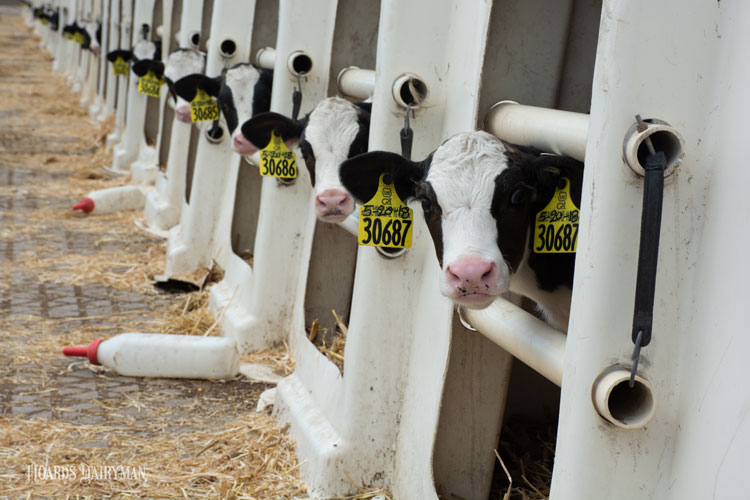
Since calves are highly susceptible to disease, farmers should be using both physical and behavioral indicators to help identify a potential illness. Monitoring calves frequently for changes helps for early intervention and improves the long-term outcomes.
“In addition to physiological kinds of disease, calves will also exhibit a range of behavioral changes when they’re ill,” said Alycia Drwencke, Cornell Cooperative Extension Regional Dairy Specialist. “Oftentimes these behavioral changes can be identified earlier than many of physical signs they can present, so it really makes it extremely important to pay close attention to what they’re doing, to know if they’re going to deviate from normal.”
Look for these signs
Behavioral changes to monitor include:
- Human interaction
- Grooming
- Feed and water intake
- Isolation
- Posture
- Play behavior
- Length of time lying down
Monitoring these behaviors regularly can help farmers identify if calves are healthy or experiencing a health event.
To help with diagnosis and treatment, University of Wisconsin researchers developed a system for diagnosing respiratory issues that assigns a score for symptoms.
“You’re basically going to assign a score to the calf based on these areas,” Drwencke said during “Recognizing and Diagnosing Disease,” a Cornell Cooperative Extension podcast. “If she has a cough, you’re going to give her two points, if she has a fever above 39.2°C (102.5°F), you’re going to give her two points. If she has nasal discharge, you’re going to give her four points,” said Drwencke. “What these researchers establish is that if a calf scores a total of five of higher, you’re going to classify this as a respiratory case. You can use that knowledge to further make your treatment and management decisions.”
What about scours
As for infectious causes of diarrhea, it can be helpful to use a resource noting the typical age range when cattle are infected with each pathogen. This can help with choosing the correct treatment.
I think it’s really important to note that the first line of defense in scouring calves shouldn’t necessarily be antibiotics. What we’re going to recommend is that your first line of defense is water and electrolytes to keep those calves hydrated,” Drwencke said.
Not only does early intervention improve outcome, but it also reduces cost. Options for observation include a technological approach, such as using an activity monitor and data from auto feeders.
“Or you can simply take the time to do some good, old-fashioned observation in person,” Drwencke said.








